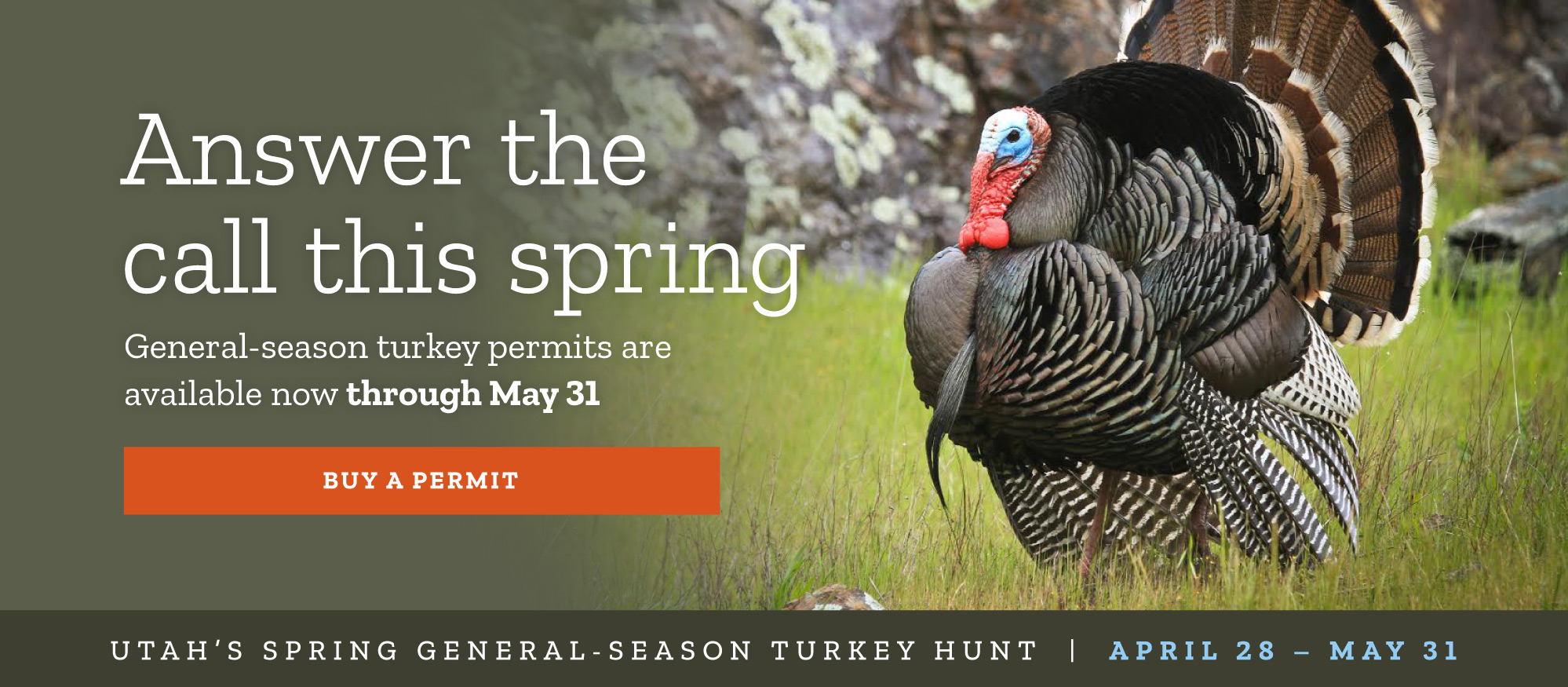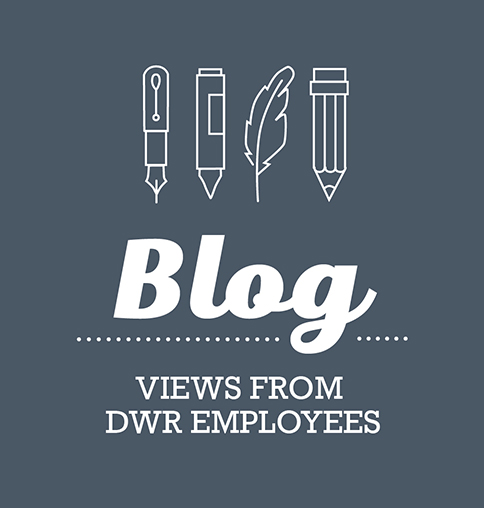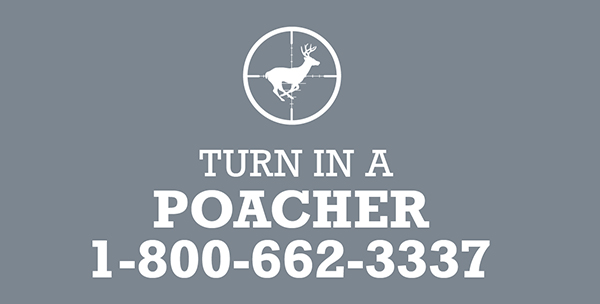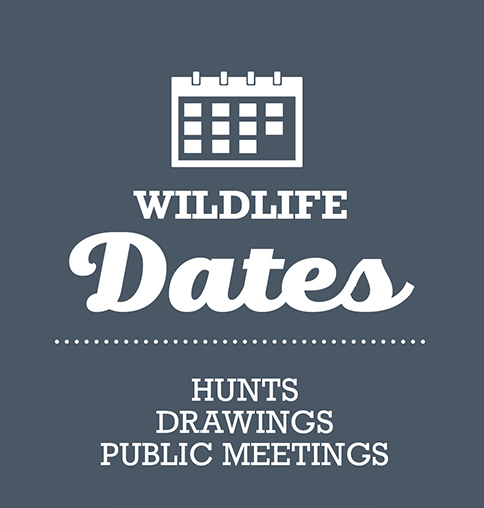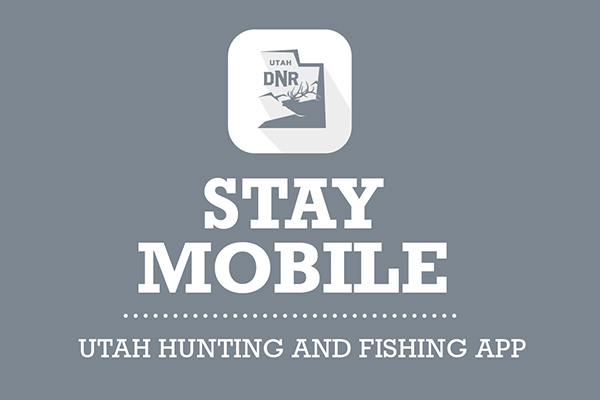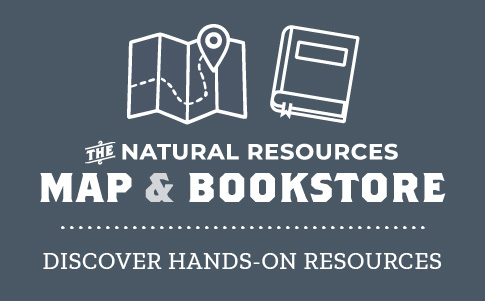Administrative rule R657-2
Adjudicative proceedings
Scroll to bottom of page to view a menu of all administrative rules
KEY: wildlife, administrative procedure
Date of Last Substantive Change: October 1, 2023
Notice of Continuation: April 4, 2022
Authorizing, and Implemented or Interpreted law: 63G-4-203
R657-2-1. Purpose and Authority.
(1) This rule sets forth the standards and procedures governing all adjudicative proceedings before the Wildlife Board and the division, except as provided in subsection (2), and specifically governs the following adjudicative proceedings:
(a) requests for agency action;
(b) declaratory orders brought pursuant to Section 63G-4-503;
(c) requests for species reclassification under Section R657-3;
(d) requests for a variance under Section R657-3;
(e) post-issuance requests for a variance or amendment to a license, permit, tag or certificate of registration;
(f) request for review of a division action taken to deny a certificate of registration under Section R657-3;
(g) requests for agency action brought to contest the division's determination of eligibility for issuance or renewal of a license, permit, tag, or certificate of registration;
(h) appeals of divisions actions taken pursuant to Section 23A-11-201; and
(i) a petition brought requesting the making, amendment, or repeal of a rule brought pursuant to Section 63G-3-601.
(2)(a) Unless otherwise specifically provided, this rule does not govern actions taken under Sections 23A-4-1106 and R657-26 to suspend a wildlife license, permit, tag, or certificate of registration.
(b) The hearing officer or Wildlife Board hearing an appeal of a hearing officer's decision to revoke a person's license, permit, tag, or certificate of registration, or to suspend receipt of privileges granted thereunder, may use any of the provisions established in this rule in conducting an adjudicative proceeding to the extent such provisions do not conflict with any of the procedural provisions of Section 23A-4-1106 or R657-26 and where conducting the proceeding according to this rule would promote fairness and equity to the parties.
(3) All rights, powers, and authorities provided in Chapter 4, Title 63G are hereby reserved to the division and Wildlife Board in conducting adjudicative proceedings under this rule and to the extent this rule does not address a specific procedural matter, the provisions of Chapter 4, Title 63G shall govern.
R657-2-2. Definitions.
(1) Terms used in this rule are defined in Section 23A-1-101 and 63G-4-103.
(2) In addition:
(a)(i) "Adjudicative proceeding" means:
(A) a division or Wildlife Board action or proceeding that determines the legal rights, duties, privileges, immunities, or other legal interests of one or more identifiable persons, including all division or Wildlife Board actions to grant, deny, revoke, suspend, modify, annul, withdraw, or amend an authority, right, or license; and
(B) judicial review of any action provided in Subsection (A).
(ii) "Adjudicative proceeding" does not mean any matter not governed by Title 63G, Chapter 4, Utah Administrative Procedures Act.
(b) "Assistant director" means the assistant director of the division.
(c) "Director" means the director of the division.
(d) "Division" means the Utah Division of Wildlife Resources.
(e) "Petitioner" means a person or entity who files a request for agency action initiating an adjudicative proceeding.
(f) "Presiding Officer" means the director, chairman of the Wildlife Board, or an individual or body of individuals designated by the director, the chairman of the Wildlife Board, or by statute or division rule to conduct an adjudicative proceeding.
(g) "Regional advisory council" means the entities created by Section 23A-2-303.
(h) "Respondent" means any person or entity against whom a proceeding is initiated or whose property interest may be affected by a proceeding initiated by the division, the Wildlife Board or any other person.
R657-2-3. Construction - Deviation from Rule.
(1) This rule shall be construed in accordance with Title 63G, Chapter 4.
(2) This rule shall be liberally construed to secure a just, speedy, and economic determination of issues.
(3)(a) The presiding officer may, for good cause, deviate from the provisions of this rule if:
(i) the presiding officer finds that strict compliance with this rule is impractical or unnecessary; or
(ii) a deviation from the rule promotes the furtherance of justice or the statutory purposes for which the action is brought.
(b) All parties shall be notified by the presiding officer of any deviation from this rule.
R657-2-4. Computation of Time.
The time within which any act shall be done, as provided in this rule, shall be computed by excluding the first day and including the last, unless the last day is a Saturday, Sunday, or State holiday, in which case it is excluded and the period runs until the end of the next day which is neither a Saturday, Sunday, or State holiday.
R657-2-5. Commencement of Adjudicative Proceedings.
(1) An adjudicative proceeding may be commenced by either:
(a) a notice of agency action, if the proceeding is commenced by the division or the Wildlife Board; or
(b) a request for agency action, if the proceeding is commenced by a person other than the division or Wildlife Board.
(2) A notice of agency action shall be filed and served according to the requirements of Section 63G-4-201(2).
(3) A request for agency action brought by a person other than the division or Wildlife Board shall be filed and served in accordance with the requirements of Section 63G-4-201(3) and R657-2-6.
R657-2-6. Request for Agency Action.
(1) A request for agency action must be filed with the presiding officer of the entity that has authority to provide relief to the petitioner. The presiding officer may refuse acceptance of any request for agency action if there is reason to believe:
(a) the request is frivolous or brought in bad faith;
(b) the matter has already been acted upon and further consideration is unnecessary;
(c) the relief sought is beyond the agency's jurisdiction; or
(d) the request fails to comply with the procedural requirements of this rule.
(2) At the time the request for agency action is filed, the petitioner shall also file any motions, affidavits, briefs, or memoranda in support of the request for agency action.
(3) The presiding officer shall review the request for agency action.
(a) If the request for agency action is made to the division, the person designated as the presiding officer shall take action upon the request within a reasonable time.
(b)(i) If the request for agency action is made to the Wildlife Board, and the request concerns a matter over which the Wildlife Board has authority, the presiding officer may:
(A) have the request for agency action placed on the Wildlife Board's agenda for action;
(B) submit the request for agency action to the appropriate regional advisory council or councils, requesting the council or councils to hold public hearings, take input, and make recommendations to the Wildlife Board as provided in Section 23A-2-303; or
(C) deny the request and notify the requesting party in writing of the denial and that the party may request a hearing before the Wildlife Board to challenge the denial.
(ii) In determining when to schedule the matter for hearing before the Wildlife Board, the presiding officer may consider the following:
(A) If the matter is general in nature, and the Wildlife Board's agenda allows, the matter may be brought at the next regularly-scheduled Wildlife Board meeting;
(B) If the matter involves a serious or irreparable harm to a person or entity that may be resolved by holding a hearing before the next regularly-scheduled meeting, the Wildlife Board may hold an emergency meeting; or
(C) If the matter involves an issue that is part of an annual decision making process, the matter may be scheduled at the next annual meeting where such decisions are made, but no later than one year after the date the request is received.
(4)(a) The presiding officer may schedule the request for agency action on the Wildlife Board agenda for action without regional advisory council input if:
(i) the presiding officer determines that the public interest in deciding the matter without seeking input from the regional advisory councils outweighs the benefit of considering recommendations of the regional advisory councils;
(ii) the request for agency action seeks a remedy that affects only one person or a small number of persons, thus making broad public input unnecessary; or
(iii) the delay associated with seeking regional advisory council input will result in serious or irreparable harm to the petitioner or the respondent, provided the petitioner or respondent has not been negligent in filing the request for agency action in a timely fashion.
(b) Upon a majority vote of the Wildlife Board, any request for agency action submitted to it by the presiding officer that has not been considered by the regional advisory councils may be referred to the regional advisory councils for the purpose of gathering input prior to the Wildlife Board taking further action.
(5) The petitioner shall provide a copy of the request for agency action to any person known by the petitioner to have a direct interest in the proceeding or who will be directly affected by its outcome.
R657-2-7. Designation of Adjudicative Proceedings.
(1) Except as otherwise provided in this rule or at the discretion of the presiding officer, all adjudicative proceedings before the division and the Wildlife Board are designated as informal.
(2) Any time before a final order is issued in any adjudicative proceeding, the presiding officer may convert an informal adjudicative proceeding to a formal adjudicative proceeding or a formal adjudicative proceeding to an informal adjudicative proceeding if:
(a) conversion of the proceeding is in the public interest; and
(b) conversion of the proceeding does not unfairly prejudice the rights of any party.
(3) Any party to an adjudicative proceeding, including the division, may by motion request a formal hearing.
R657-2-8. Pleadings.
(1) Pleadings shall consist of a notice of agency action, a request for agency action, responses, motions and affidavits, briefs, and memoranda of law and fact in support thereof.
(2) A notice of agency action, request for agency action, and any pleadings relative thereto must be double-spaced, typewritten or legibly handwritten, and presented on standard 8 1/2 by 11 inch paper. Pleadings filed relative to a notice of agency action or request for agency action shall contain a clear and concise statement of the matter that is the basis of the pleading, with an appropriate description of the relief sought.
(3) The presiding officer may allow pleadings to be amended at any time. Initiatory pleadings may be amended without leave of the presiding officer at any time before a responsive pleading has been filed. Defects in pleadings which do not affect substantial rights of the parties shall be disregarded.
(4) Motions may be submitted either by written motion or oral argument and the filing of affidavits in support or contravention thereof may be permitted. A written motion must be accompanied by a supporting memorandum of fact and law.
(5) Pleadings shall be signed by the party or the party's representative and shall show the signer's address. The signature shall be deemed to certify that the signer has read the pleading and that, to the best of the signer's knowledge and belief, there is good ground to support it.
(6) Exhibits must be clearly marked to show the party proffering the exhibit, and the exhibit number.
(7) All pleadings shall be submitted to the presiding officer at least 20 days prior to the date upon which the matter that is the subject of the pleadings will be decided.
(8) An original of all pleadings, affidavits, briefs, memoranda, and exhibits will be filed with the division. The presiding officer may direct any party to provide additional copies as needed.
(9)(a) Upon the issuance of a notice of agency action or after receipt of a request for agency action, the presiding officer shall provide notice to all parties of the pending adjudicative proceeding.
(b) Any response to a notice of agency action or request for agency action must be submitted within 30 days of the mailing date of the notice of agency action or the notice required under Subsection 63G-4-201(3)(d), which shall include:
(i) the docket number or other reference number;
(ii) the name of the adjudicative proceeding;
(iii) a statement of the relief that the respondent seeks;
(iv) a statement of the facts; and
(v) a statement summarizing the reasons that the relief requested should be granted.
(10) The presiding officer may extend the response time for good cause.
R657-2-9. Parties.
(1) Parties to an adjudicative proceeding shall be persons who have a statutory right to be parties and persons who have a legally-protected interest or right in the subject matter which may be affected by the proceeding.
(2) The division will be considered a party to all adjudicative proceedings conducted by the Wildlife Board.
R657-2-10. Appearances and Representation.
(1) Parties shall enter their appearances at the beginning of the hearing or at such time as may be designated by the presiding officer by stating:
(a) the party's full name and address; and
(b) the party's position or interest in the proceeding.
(2) Any individual or an agent designated by an individual, partnership, corporation, association, political subdivision or its units, governmental subdivision or its units, public or private organization or entity of any character, or another agency, may represent his, her, or its interest in the proceeding.
(3) Any party may be represented by an attorney or legal representative as authorized and permitted by the Utah State Bar and state law.
(4) Subject to the limitations imposed by the presiding officer to ensure the adjudicative proceeding is conducted in an orderly and efficient manner, each party to an adjudicative proceeding may participate in the hearing and may introduce evidence, examine and cross-examine each witness, make arguments, and participate generally in the proceeding.
R657-2-11. Notice and Service.
(1) Timely notice of all proceedings shall be given to all parties and any other person who, in the opinion of the presiding officer, has a direct interest in the proceeding.
(2) When a party is represented by an attorney or other authorized representative, service upon the attorney or representative shall constitute service upon the party.
(3) Any person desiring notification by mail from the Wildlife Board or division of specific matters may request to be notified by filing the name, address, telephone number, and specific matters for which the person seeks notification.
R657-2-12. Discovery.
(1)(a) Discovery for informal hearings is prohibited and the division or Wildlife Board may not issue subpoenas or other discovery orders.
(b) Upon motion by a party to a formal hearing, and for good cause shown, the presiding officer may authorize discovery against another party to a formal hearing, including the division, as provided in the Utah Rules of Civil Procedure.
(2) All parties may have access, upon request, to information contained in division files and all materials and information gathered in any investigation pertinent to the adjudicative proceeding, to the extent permitted under Title 63G, Chapter 2 - Governmental Records Access and Management Act and under Title 63G, Chapter 4 - Administrative Procedures Act.
(3) Subpoenas and other orders to secure the attendance of witnesses or the production of evidence in formal adjudicative proceedings shall be issued by the presiding officer when requested by any party, or may be issued by the presiding officer at the presiding officer's discretion in the interest of just, fair, and economic decision making.
R657-2-13. Prehearing Procedure.
The presiding officer may, upon written notice to all parties of record, hold a prehearing conference to:
(1) formulate or simplify the issues;
(2) obtain admission of fact and documents that will avoid unnecessary introduction of evidence or other efforts of establishing proof of a matter asserted;
(3) arrange for the exchange of proposed exhibits; and
(4) agree to matters that may expedite the orderly conduct of the proceedings or its settlement.
R657-2-14. Continuance.
(1) Any party may, by filing a motion, request the presiding officer to continue an adjudicative proceeding, provided the motion is filed within a reasonable time prior to the date of the hearing and proper notice is given to the other parties to the proceeding. The presiding officer may grant such a request and continue the proceeding until the next regularly scheduled meeting, or another more convenient time, unless in the presiding officer's judgement, it would be contrary to the just and fair resolution of the proceeding.
(2) The Wildlife Board, on its own motion, or on the motion of the division, may order the continuance of any proceeding until the next regularly scheduled meeting of the Wildlife Board in order to allow adequate time for division staff to evaluate any evidence presented during a hearing.
R657-2-15. Intervention.
(1) A person may not intervene in an informal adjudicative proceeding, unless allowed by the presiding officer for good cause.
(2) A person may file a petition for an order granting leave to intervene in a formal adjudicative proceeding as provided in Section 63G-4-207 and in accordance with the following:
(a) Any petition to intervene or materials filed after the date a response is due may be considered at the next regularly scheduled meeting only upon separate motion of the intervenor made at or before the hearing for good cause shown.
(b) Any party to a formal adjudicative proceeding in which intervention is sought may make an oral or written response to the petition for intervention. The response shall:
(i) state the basis for opposition to intervention and may suggest limitations to be placed upon the participation of the intervenor if intervention is granted; and
(ii) be presented or filed at or before the hearing.
(3) The presiding officer will consider the petition for an order granting leave to intervene and any response in determining whether to allow a party to intervene.
(4) If it appears during the course of the proceeding that an intervenor has no direct or substantial interest in the proceeding and that the public interest does not require the intervenor's participation in the hearing, the presiding officer may dismiss the intervenor from the proceeding.
(5) Where two or more intervenors have substantially the same interests and positions in the proceeding the presiding officer may at any time during the proceeding limit the number of intervenors who will be permitted to testify, cross-examine witnesses, or make and argue motions and objections.
R657-2-16. Hearings, Evidence and Argument.
(1)(a) After the commencement of an adjudicative proceeding, the presiding officer may hold a hearing if:
(i) a hearing is required by statute or rule; or
(ii) a hearing is requested by a party within 30 days after the commencement of the adjudicative proceeding.
(b) The presiding officer may, at the presiding officer's discretion, initiate a hearing to determine matters within the presiding officer's authority.
(2) Notice of the hearing shall be served on all parties by regular mail at least 10 days prior to the hearing.
(3) If the hearing is informal, it shall be conducted in accordance with the provisions of Section 63G-4-203. If the hearing is formal it shall be conducted in accordance with the provisions of Section 63G-4-206.
(4)(a) An informal hearing may be conducted without adherence to the rules of evidence required in judicial proceedings. The Utah Rules of Evidence shall be used as a guide for evidentiary matters in formal hearings.
(b) The presiding officer may exclude irrelevant, immaterial, or unduly repetitious evidence from the hearing.
(c) The weight given to evidence shall be determined by the presiding officer.
(5) Hearsay evidence is admissible in informal and formal hearings consistent with Utah law governing the admissibility of such in administrative adjudicative proceedings.
(6) Documentary evidence may be received in the form of copies or excerpts and, upon request, parties shall be given an opportunity to compare the copy with the original.
(7) Upon the conclusion of taking evidence, the presiding officer may, in the presiding officer's discretion, permit the parties to make closing oral arguments.
R657-2-17. Burden of Proof.
The petitioner shall have the burden of proof by preponderance of the evidence in all adjudicative proceedings.
R657-2-18. Record of Hearing.
(1) The division or Wildlife Board may record any informal hearing. The division or Wildlife Board shall record formal hearings.
(2)(a) Any party, at the party's own expense, may have a reporter, approved by the division or Wildlife Board, prepare a transcript from the record of the hearing and shall furnish a transcript of the testimony to the division or Wildlife Board free of charge.
(b) This transcript shall be available at the Salt Lake division office to any party to the hearing.
R657-2-19. Failure to Appear - Default.
(1) When a party or the party's authorized representative to a proceeding fails to appear at a hearing after due notice has been given, the presiding officer may:
(a) continue the matter;
(b) enter an order of default as provided by Section 63G-4-209; or
(c) hear the matter in the absence of the defaulting party.
R657-2-20. Decisions and Orders.
(1) After the presiding officer has reached a final decision upon the adjudicative proceeding, the presiding officer shall issue a signed order in writing:
(a) in accordance with Section 63G-4-203(1)(c) for orders issued at the conclusion of an informal hearing; and
(b) in accordance with Section 63G-4-208 for orders issued at the conclusion of a formal hearing.
R657-2-21. Agency Review.
(1)(a) When a division action is taken by a division employee, other than the director acting as the presiding officer, any aggrieved party may seek review of the order.
(b) The request for review shall be made to the director in accordance with Section 63G-4-301(1).
(c) Except as provided in Section 63G-4-401(2), review by the director is a prerequisite for judicial review.
(2) Requests for review of an action within the statutory or regulatory purview of the division shall:
(a) be filed with the director within 30 days after the issuance of the order; and
(b) be sent to each party.
(3) The request for review shall be reviewed by the director or the assistant director, when designated by the director.
(4)(a) Unless otherwise provided by law, all reviews shall be based on the record before the presiding officer.
(b) In order to assist in review, parties, upon request, may be allowed to file briefs or other documents explaining their position.
(5) Parties are not entitled to a hearing on review unless:
(a) specifically allowed by statute; or
(b) the director grants a hearing to assist the review.
(6) Notice of any hearing shall be mailed to all parties within 10 days of the hearing.
(7)(a) Within a reasonable time after the filing of any response, other filings, or after any hearing, the director shall issue a written order on review and mail a copy of the order on review to each party.
(b) The order on review shall contain the items, findings, conclusions, and notices set forth in Subsection 63G-4-301(6)(c).
R657-2-22. Judicial Review.
(1) Any party aggrieved by final division or Wildlife Board action may obtain judicial review of such action pursuant to Sections 63G-4-401, 63G-4-402, and 63G-4-403, except where judicial review is expressly prohibited by statute.
(2) A petition for judicial review shall be filed within 30 days after the date the order constituting final agency action is issued.
(3) A party may seek judicial review of an action taken by the division or Wildlife Board only after exhausting all administrative remedies available, including those available through the Wildlife Board and the regional advisory councils, as required herein, unless a court of competent jurisdiction makes a finding that requiring exhaustion:
(a) would result in irreparable injury; or
(b) would serve no useful purpose.
R657-2-23. Declaratory Orders.
(1) Pursuant to Section 63G-4-503, any person may file a request for agency action requesting that the division or Wildlife Board issue a declaratory order determining the applicability of any statute, rule, or order within the primary jurisdiction of the division or Wildlife Board.
(2) A request for a declaratory order shall set forth:
(a) the specific statute, rule, or order which is in question;
(b) the specific facts for which the order is requested;
(c) the manner in which the person making the request claims the statute, rule, or order may affect him or her; and
(d) the specific questions for which a declaratory order is requested.
(3) The division or Wildlife Board may, in their discretion, decline to issue declaratory orders where they deem the facts presented to be conjectural, or where the public interest would best be served by not issuing such an order.
R657-2-24. Emergency Orders.
The division or Wildlife Board may issue an order on an emergency basis without complying with this rule under the circumstances and procedures set forth in Section 63G-4-502.
Administrative rule R657-4
Possession and release of pen-reared gamebirds
Scroll to bottom of page to view a menu of all administrative rules
KEY: wildlife, birds, game laws, aviculture
Date of Last Change: October 8, 2024
Notice of Continuation: April 4, 2022
Authorizing, and Implemented or Interpreted Law: 23A-5-302; 23A-2-305; 23A-2-304
R657-4-1. Purpose and Authority.
(1) Under authority of Sections 23A-5-302, 23A-2-305 and 23A-2-304, the Wildlife Board has established this rule for the possession, importation, purchase, propagation, sale, barter, trade, release or disposal of live pen-reared gamebirds and their eggs.
(2) The provisions of Rule R657-3b do not apply to activities conducted by holders of a valid Wildlife Document to the extent those activities are covered by this rule.
R657-4-2. Definitions.
(1) Terms used in this rule are defined in Section 23A-1-101.
(2) In addition:
(a) "Authorized Species" those species specifically authorized on a certificate of registration.
(b) "Commercial hunting area" or "CHA" means a parcel of land permitted to release pen-reared or propagated gamebirds more than five days per year.
(c) "Contiguous" means a piece of land that shares a boundary, including a single point at corners.
(d) "Director" means the director of the Division.
(e) "Disease free status" means a bird, or representative sample of a flock has tested negative for pathogens listed in Rule R58-6 and Sections R657-4-10, R657-4-11, R657-4-12, R657-4-13.
(f) "Division" means the Utah Division of Wildlife Resources.
(g) "Durable marking" means metal leg band, patagial tag, or other marking attached to an animal identifying it as a pen-reared bird that can reasonably be expected to remain attached for more than one year and is easily visible on inspection of a bird in hand.
(h) "Field trial" means an organized event where the abilities of dog handlers and their dogs and are evaluated, including the ability of the dogs to hunt or retrieve gamebirds.
(i) "NPIP" means National Poultry Improvement Plan.
(j) "Operator" means a person, group, or business entity, including their agents, employees and contractors, that manages, owns, administers, or oversees the activities and operations of a facility or CHA. Operator further includes any person, group or business entity that employs or contracts another to serve or act as an operator.
(k) "Pen-reared Gamebird" means species of the following that were breed from legally acquired captive stock and hatched and raised in captivity:
(i) chukar partridge;
(ii) red-legged partridge;
(iii) gray (Hungarian) partridge;
(iv) pheasant (genus Syrmaticus, Chrysolophus, and Phasianus);
(v) Bobwhite quail;
(vi) California quail;
(vii) Gambel's quail; and
(viii) waterfowl (family Anatidae).
(l) "Train" or "training" means informal handling, exercising, teaching, instructing, and disciplining of dogs or falconry birds in the skills and techniques of hunting and retrieving gamebirds characterized by absence of fees, judging, or awards.
(m) "Wildlife Document" A certificate or registration, permit, license or other document issued by the Division granting permission for a possession of animals or a specific activity.
R657-4-3. Prohibited Possession of Pen-reared Gamebirds.
(1) A person may not take any live gamebird or the egg of any gamebird from the wild, except as provided in Rules R657-3, R657-6, R657-9, the proclamation of the Wildlife Board for taking upland game and proclamation of the Wildlife Board for taking waterfowl. Any permit or Wildlife Document granted in this rule does not give permission to take any wild birds or other animals, including species listed as pen-reared gamebirds.
(2) Except as provided in Section R657-4-14, a person may not possess, purchase, or dispose of a live pen-reared gamebird without first obtaining a Pen-reared Gamebird Personal Possession Wildlife Document from the Division or Commercial Gamebird Facility License from the Department of Agriculture and Food.
(3) A person may not import, propagate, sell, barter, trade, any live pen-reared gamebird, or the eggs of any pen-reared gamebird, without first obtaining a Personal Use Pen-reared Gamebird Permit from the Division or Commercial Gamebird Facility License from the Department of Agriculture and Food.
R657-4-4. Exhibit of Wildlife Document, License, Pen-reared Gamebirds, and Equipment.
(1) A conservation officer or any other law enforcement officer may request any person engaged in activities covered under this rule to exhibit:
(a) the person's license, permit, health certificate, bill of sale, Wildlife Document, or proof of ownership;
(b) any pen-reared gamebirds held in possession; and
(c) any device, apparatus, or facility used for activities covered under this rule.
(2)(a) Certificates of registration, permits, wildlife documents and licenses are issued upon the express condition that the operator agrees to permit the Division, Department of Agriculture and Food, and public health and safety officials to enter and inspect the premises, facilities, and all required records and health certificates to ensure compliance with this rule and other applicable laws.
(b) Inspections shall be made during reasonable hours.
R657-4-5. Penalty for Violation.
(1) The Division may suspend or revoke any license, permit or certificate related to pen-reared gamebird possession or release, as authorized under Section 23A-4-1106 and Rule R657-26, for violation of Utah Code, rule, or terms of the certificate of registration.
(2) A violation of this rule is punishable as provided in Section 23A-6-301.
(3) The Division may dispose of pen-reared gamebirds, or their eggs held in possession in violation of this rule.
R657-4-6. Recapture.
(1) Recapturing pen-reared gamebirds that have been released or escaped is permitted only:
(a) within CHA release area boundaries for approved species listed on the CHA Wildlife Document as not established in the wild in the area; or
(b) to capture birds who escaped from a registered personal use pen-reared gamebird facility or commercial gamebird facility.
(2) Any pen-reared gamebird that exits a designated release area becomes the property of the state and may not be recaptured.
(3) Any pen-reared gamebirds recaptured may not be recounted or added to the total number of birds released for annual reporting purposes.
R657-4-7. Importation of Live Pen-reared Gamebirds and Eggs of Gamebirds.
All pen-reared gamebirds and hatching eggs imported into Utah must meet the requirements found in Rules R58-1 and R58-6.
R657-4-8. Records of Sale or Purchase of Live Pen-reared Gamebirds.
(1) Any person who sells, barters, trades, or disposes of a live pen-reared gamebird or the egg of a pen-reared gamebird to another person, including sale of birds released on commercial hunting areas or during high volume pen-reared gamebird releases, must provide a bill of sale that includes:
(a) the seller's Commercial Gamebird Facility License number or Pen-reared Gamebird Personal Possession Wildlife Document number and CHA or High Volume Pen-reared Gamebirds Release Wildlife Document number as applicable;
(b) the species;
(c) the number of pen-reared gamebirds;
(d) the sex of pen-reared gamebirds if plumages exhibit sexual dimorphism; and
(e) the date of the transaction.
(2) Any person who possesses, imports, purchases, propagates, sells, barters, trades, or disposes of live pen-reared gamebirds must keep a record of each transaction that includes:
(a) the species;
(b) the number of pen-reared gamebirds;
(c) the sex of pen-reared gamebirds if plumages exhibits sexual dimorphism;
(d) the name and address of each party to the transaction;
(e) Commercial Gamebird Facility License number, Pen-reared Gamebird Personal Possession Wildlife Document number, CHA Wildlife Document number and High Volume Pen-reared Gamebirds Release Wildlife Document number as applicable; and
(f) the date of the transaction.
(3) The records required under Subsection (2) must be maintained for three years.
R657-4-9. Unlawful Release of Pen-reared Gamebirds.
(1) Except as provided in Section R657-4-17, it is unlawful to release or abandon any live pen-reared gamebird without first obtaining written authorization from the Division in the form of a High Volume Pen-reared Gamebird Release Wildlife Document, Commercial Hunting Areas Wildlife Document, or written prior approval of the Division director or regional supervisor.
(2) The director of the Division may authorize the destruction of any escaped pen-reared gamebirds that may impact wildlife.
(3) A person may not restrict a pen-reared gamebird's ability to fly or run during hunting activities in any manner other than dizzying, tucking heads under wings before release or through the use of release mechanisms such as bird launchers and kick cages.
R657-4-10. Disease General Provisions.
(1) The Division may:
(a) investigate any reported disease and take any necessary action to control a contagious or infectious disease affecting domestic animals, wildlife, or public health; or
(b) order a veterinarian or certified pathologist's report of a suspected disease, and may order quarantine, immunization, testing, or other sanitary measures.
(2)(a) The Division may order the destruction and disposal of any pen-reared gamebird found to have an untreatable disease which poses a potential threat or health risk to domestic poultry, humans, or wildlife, as determined by the Division, the Department of Agriculture and Food, or the Department of Health and Human Services.
(b) Actions taken pursuant to Subsection (a) may be at the operator's expense.
(c) Actions taken pursuant to Subsection (a) shall be accomplished by following procedures acceptable to the Division that ensure the disease is not transmitted to wildlife, domestic animals, or humans.
(3) Operators must take reasonable precautions to prevent and control the spread of infectious diseases among pen-reared gamebirds under their control.
(4) Commercial Gamebird Facilities must be licensed through the Department of Agriculture and Food under Rule R58-6, and meet requirements outlined therein.
R657-4-11. Disease Provisions for Holders of High Volume Gamebird Release and Commercial Hunting Area Release Wildlife Documents.
(1) Groups or individuals releasing pen-reared gamebirds under a High Volume Pen-reared Gamebird Release Wildlife Document or Commercial Hunting Area Pen-reared Gamebird Release Wildlife Document shall:
(a) Obtain pen-reared gamebirds from a Commercial Gamebird Facility within Utah licensed by the Department of Agriculture and Food;
(b) Import pen-reared gamebirds into Utah following Department of Agriculture and Food requirements in Section R58-1; or
(c) Obtain pen-reared gamebirds from a holder of a pen-reared Gamebird Personal Possession Wildlife Document and test a representative sample prior to release and not more than 30 days of acquisition for:
(i) Mycoplasma gallisepticum;
(ii) Mycoplasma synoviae;
(iii) Avian Influenza virus; and
(iv) Salmonella pullorum-typhoid.
(A) Salmonella pullorum-typhoid testing is only required if any other domestic birds are on the facility or gamebirds did not originate from an NPIP source flock certified for Pullorum-Typhoid.
(v) Additional diseases identified by the Division or Utah Department of Agriculture and Food as threats to wildlife or domestic birds if the wildlife document holder has been notified of additional requirements.
(2) If any birds are kept longer than 30 days, or are housed in the same facility that has contained any birds for more than 30 days operators must obtain a statement from a veterinarian within 30 days before release that a representative sample of birds tested negative for:
(a) Mycoplasma gallisepticum;
(b) Mycoplasma synoviae;
(c) Avian Influenza virus; and
(d) Salmonella pullorum-typhoid.
(i) Salmonella pullorum-typhoid testing is only required if any other domestic birds are on the facility or if any gamebirds did not originate from an NPIP source flock certified as free from Pullorum-Typhoid.
(e) Additional disease identified by the Division or Utah Department of Agriculture and Food as threats to wildlife or domestic birds if the wildlife document holder has been notified of additional requirements.
(3) In the case of game birds testing positive for diseases listed in Subsection (2) game birds shall not be brought into, out of, or released from any holding facilities before disease free status has been established.
(a) Facilities are considered disease free 60 days after negative testing as specified in Subsection (2).
(4) Testing as per Subsection (2) is additionally required before release after positive disease tests.
(5) Additional measures may be applied as deemed appropriate by the Division, the Department of Agriculture and Food, or the Department of Health and Human Services.
(6) A holder of High Volume Pen-reared Gamebird Release Wildlife Documents or Commercial Hunting Area Pen-reared Gamebird Release Wildlife Documents shall notify the Division of any large or unusual mortality events due to infectious disease, diet, or unknown cause within 48 hours of the event.
R657-4-12. Disease Provisions for Holders of Pen-reared Gamebird Personal Possession Wildlife Documents.
(1) Those holding or propagating pen-reared gamebirds under a Pen-reared Gamebird Personal Possession Wildlife Document shall:
(a) Obtain pen-reared gamebirds from a Commercial Gamebird Facility within Utah licensed by the Department of Agriculture;
(b) Import pen-reared gamebirds into Utah following Department of Agriculture and Food requirements in Section R58-1; or
(c) Test a representative sample within 30 days of acquisition for:
(i) Mycoplasma gallisepticum;
(ii) Mycoplasma synoviae;
(iii) Avian Influenza virus; and
(iv) Salmonella pullorum-typhoid.
(A) Salmonella pullorum-typhoid testing is only required if any other domestic birds are on the facility or gamebirds did not originate from an NPIP source flock certified for Pullorum-Typhoid.
(v) Additional diseases identified by the Division or Utah Department of Agriculture and Food as threats to wildlife or domestic birds if the wildlife document holder has been notified of additional requirements.
(2) In the case of gamebirds testing positive for diseases listed in Subsection (1)(c), game birds shall not be brought into, out of, or released from any holding facilities before disease free status has been established.
(a) Facilities are considered disease free 60 days after negative testing as specified in Subsection (1)(c).
(b) Additional measures may be applied as deemed appropriate by the Division, the Department of Agriculture and Food, or the Department of Health and Human Services.
(3) Those holding or propagating pen-reared gamebirds under a Pen-reared Gamebird Personal Possession Wildlife Document shall notify the Division of any large or unusual mortality events due to infectious disease, diet, or unknown cause within 48 hours of the event.
R657-4-13. Disease Provisions for those possessing gamebirds under short term pen-reared gamebird possession provisions or releasing gamebirds under personal use pen-reared gamebird release provisions.
(1) Those possessing or releasing pen-reared gamebirds under short term pen-reared gamebird possession provisions or personal use pen-reared gamebird release provisions shall:
(a) Obtain pen-reared gamebirds from a Commercial Gamebird Facility within Utah licensed by the Department of Agriculture; or
(b) Import pen-reared gamebirds into Utah following Department of Agriculture and Food requirements in Section R58-1; or
(c) Test a representative sample within 30 days before release for:
(i) Mycoplasma gallisepticum;
(ii) Mycoplasma synoviae;
(iii) Avian Influenza virus; and
(iv) Salmonella pullorum-typhoid.
(A) Salmonella pullorum-typhoid testing is only required if any other domestic birds are on the facility or gamebirds did not originate from an NPIP source flock certified for Pullorum-Typhoid.
(v) Additional diseases identified by the Division or Utah Department of Agriculture and Food as threats to wildlife or domestic birds if the wildlife document holder has been notified of additional requirements.
(2) In the case of game birds testing positive for diseases listed in Subsection (1)(c) game birds shall not be brought into, out of, or released from of any holding facilities before disease free status has been established.
(a) Facilities are considered disease free 60 days after negative testing listed in Subsection (1)(c).
(b) Retesting as per Subsection (1)(c) is additionally required before release.
(c) Additional measures may be applied as deemed appropriate by the Division, the Department of Agriculture and Food, or the Department of Health and Human Services.
(e) Those possessing gamebirds under short term pen-reared gamebird possession provisions shall notify the Division of any large or unusual mortality events due to infectious disease, diet or unknown cause within 48 hours of the event.
R657-4-14. Short Term Pen-reared Gamebird Possession.
(1) A Wildlife Document is not required if:
(a) a person has pen-reared gamebirds collectively in possession less than 60 days;
(b) fewer than 50 birds are held;
(c) pen-reared gamebirds were acquired in Utah or imported as per R657-4-7;
(d) each pen-reared gamebird has a durable marking attached;
(e) a bill of sale establishing proof of purchase from a legal source is in possession;
(f) pen-reared gamebirds meet disease requirements specified in Section R657-4-10 and R657-4-13; and
(g) the pen-reared gamebirds are used for dog training or falconry bird training.
(2) No registration is needed for holding pen-reared gamebirds in temporary storage while the pen-reared gamebirds are in transit through Utah provided the birds are identified as to their source and destination and are not removed from the shipping containers.
(3) Any person in possession of pen-reared gamebirds must comply with all state, federal, city, and other municipality laws, rules, and regulations pertaining to the possession of live pen-reared gamebirds.
R657-4-15. Pen-reared Gamebird Personal Possession Wildlife Document.
(1) A Pen-reared Gamebird Personal Possession Wildlife Document is required for any of the following:
(a) Pen-reared gamebirds are held 60 day or longer;
(b) 50 or more and less than 1,000 total birds and viable eggs are held in possession;
(c) for import, propagation, sale, barter, trade of pen-reared gamebirds; or
(d) for hatching of pen-reared gamebird eggs.
(2) A person who acquires live pen-reared gamebirds is not required to obtain a Pen-reared Gamebird Personal Possession Wildlife Document if they:
(a) meet criteria in Section R657-4-14; or
(b) possess a Commercial Gamebird Facility License from the Department of Agriculture and Food as outlined in Rule R58-6.
(3) Pen-reared Gamebird Personal Possession Wildlife Documents:
(a) are not transferable;
(b) are valid for one year from the date of issuance; and
(c) are limited to authorized pen-reared gamebird species or as indicated on the permit.
(4) Any person who has applied for and obtained a Pen-reared Gamebird Personal Possession Wildlife Document must comply with all state, federal, city, and other municipality laws, rules, and regulations pertaining to the possession of live pen-reared gamebirds.
(5) Holders of Pen-reared Gamebird Personal Possession Wildlife Documents shall:
(a) construct facilities so as to prevent escape of birds;
(b) construct facilities to preclude access to native waterways; and
(c) meet other minimum facility standards as specified in Division pen-reared gamebird facility guidelines available at https://wildlife.utah.gov.
(6) A facility inspection is not required to issue a Pen-reared Gamebird Personal Possession Wildlife Document.
(7) Pen-reared Gamebird Personal Possession Wildlife Document holders must comply with disease provisions as per Section R657-4-10 and R657-4-12.
(8) Registration for a Pen-reared Gamebird Personal Possession Wildlife Document:
(a) A person may obtain a Pen-reared Gamebird Personal Possession Wildlife Document through the Division's online permitting system.
(b) If the applicant is under the age of 18, a parent or guardian must co-sign the application and is responsible for compliance with this rule and all other associated laws.
R657-4-16. Commercial Gamebird Facility.
(1) A Commercial Gamebird Facility License required if:
(a) more than 1,000 total birds and viable eggs are held in possession; and
(b) for importation, propagation, sale, barter, trade of gamebirds.
(2) A Commercial Gamebird Facility must be licensed by the Department of Agriculture and Food under Rule R58-6, Poultry and Captive-Raised Gamebirds.
(3) Commercial Gamebird Facilities shall comply with Division pen-reared gamebird facility guidelines available at https://wildlife.utah.gov in addition to Department of Agriculture and Food Requirements.
(a) Commercial Gamebird Facilities shall be constructed so as to prevent escape of birds.
(b) Commercial Gamebird Facilities shall prevent access to native waterways.
(4) Any person in possession of pen-reared gamebirds must comply with all state, federal, city, and other municipality laws, rules, and regulations pertaining to the possession of live pen-reared gamebirds.
R657-4-17. Personal Use Pen-reared Gamebird Release.
(1) A person may release legally acquired pen-reared gamebirds without wildlife documents provided:
(a) the person or group of persons is not releasing more than ten pen-reared gamebirds per day or three pen-reared gamebirds per dog or registered falcon per day, whichever is greater;
(b) the group releasing pen-reared gamebirds is less than or equal to ten persons;
(c) the person or group is releasing legally acquired pen-reared gamebirds for training bird dogs or falconry birds;
(d) the person or group birds has an invoice or bill of sale in their possession showing lawful personal possession or ownership of the pen-reared gamebirds;
(e) each pen-reared gamebird must be marked with a durable marking;
(f) any pen-reared gamebird released in areas with wild populations of the same species must be marked with a visible streamer or tape at least 12 inches in length before being released, and must have the streamer or tape attached when killed; and
(g) the use of dogs complies with Rules R657-6, R657-9 and R657-54a and use of falconry birds complies with Rule R657-20.
(2) A person may only take the pen-reared gamebirds they or members of their group have released.
(3) Pen-reared gamebirds that are not recovered on the day of the training, released without permanent marking, or pen-reared gamebirds that escape shall become property of the state and may not be recaptured or taken except:
(a) as specified in Section R657-4-6; or
(b) during legal hunting seasons as specified in the Upland Game and Waterfowl proclamations of the Wildlife Board.
(4) Pen-reared gamebirds released must:
(a) meet requirements specified in Section R657-4-10 and R657-4-13; and
(b) be healthy, capable of flight, free of disease and suitable for human consumption.
R657-4-18. High Volume Pen-reared Gamebird Release (Field Trial).
(1) A High Volume Pen-reared Gamebird Release Wildlife Document is required for:
(a) groups larger than 10 people releasing pen-reared gamebirds in the same area on 5 or fewer days within a 365 day period;
(b) release of greater than ten pen-reared gamebirds per day in the same area on 5 or fewer days within a 365 day period; or
(d) a field trial involving the pursuit of wild rabbits.
(2)(a) A person or group may conduct an event using pen-reared gamebirds provided that person or group applies for and obtains a Wildlife Document from the Division, except as provided in Subsection (b).
(b) A person or group may conduct a field trial using approved pen-reared gamebirds on a commercial hunting area without obtaining a Wildlife Document.
(3)(a) Up to 1,000 pen-reared gamebirds may be in possession for up to ten days under a High Volume Pen-reared Gamebird Release Wildlife Document.
(b) Possession of pen-reared gamebirds must comply with Section R657-4-10, R657-4-11 and other applicable rule.
(4) Any person or group using pen-reared gamebirds must have an invoice or bill of sale available for inspection showing lawful personal possession or ownership of such birds as specified in Section R657-4-8.
(5)(a) Each pen-reared gamebird must be marked with a durable marking, except as provided in Subsection (c).
(b) The marking must remain attached to the pen-reared gamebird.
(c) The marking is not required for approved pen-reared gamebirds released in a field trial that is conducted on a commercial hunting area.
(6) Pen-reared gamebirds may be released only:
(a) on the property specified in the Wildlife Document;
(b) on the dates specified in the Wildlife Document;
(c) after the release area has been cleared of wild gamebirds using trained pointing or flushing dogs; and
(d) on public property with additional permission from the land management agency for the event.
(7) After release, pen-reared gamebirds may be taken:
(a) on the property specified in the Wildlife Document;
(b) on the dates specified in the Wildlife Document; and
(c) by the person who released the pen-reared gamebirds, or by any person participating in the event.
(8) Pen-reared gamebirds that leave the property where the event is held, and birds remaining at the end of the field trial except within commercial hunting area boundaries, shall become the property of the state and may not be taken, except during legal hunting seasons as specified in the Upland Game or Waterfowl proclamations of the Wildlife Board.
(9) Pen-reared gamebirds released must:
(a) meet requirements specified in Section R657-4-10 and R657-4-11; and
(b) be healthy, capable of flight, free of disease and suitable for human consumption.
(10) Wild rabbits may be used for field trials provided:
(a) the dog is tracking scent trails of wild rabbits;
(b) following initial contact with a wild rabbit the dog must stop pursuit;
(c) only during the dates of the field trial event as specified in the certificate of registration; and
(d) the dog, or the person training the dog, may not harass, catch, capture, kill, injure, or at any time, possess any wild rabbits, except during legal hunting seasons.
(11) Wild rabbits may be taken only during legal hunting seasons as specified in the Upland Game or Waterfowl proclamations of the Wildlife Board.
(12) Division of Wildlife designated dog training areas are exempt from High Volume Pen-reared Gamebird Release requirements for activities authorized by the area manager.
R657-4-19. Application for a High Volume Pen-reared Gamebird Release (Field Trial) Wildlife Document.
(1)(a) Applications for High Volume Pen-reared Gamebird Release Wildlife Documents must be submitted to the appropriate regional Division office where the field trial is being held.
(b) Applications for High Volume Pen-reared Gamebird Release Wildlife Documents must be received at least 60 days before the date of the event.
(2) The Division shall not approve any application for an area where, in the opinion of the Division, the release of pen-reared gamebirds and related activities interferes with wildlife, wildlife habitat, or wildlife nesting periods.
(3) An application for a High Volume Pen-reared Gamebird Release Wildlife Document must include:
(a) operator's name, address and telephone number;
(b) detailed maps depicting boundaries of release areas and ownership of all parcels within the release area;
(c) large scale maps depicting the location of the release area relative to the nearest city or town;
(d) planned number and species of pen-reared gamebirds to be released;
(e) planned number of participants;
(f) outline of events;
(g) dates of events;
(h) written permission from landowner or land management agency, or evidence of ownership from the operator; and
(i) documentation that pen-reared gamebirds being used for the event meet requirements specified in Section R657-4-10, Section R657-4-11 and are healthy, capable of flight, free of disease and suitable for human consumption.
(4) The Division may return any application that is incomplete, completed incorrectly, or that is not accompanied by the information required in Subsection (3).
(5) In determining whether to allow the release of pen-reared gamebirds the Division shall consider:
(a) the potential release site and its relative impact on wildlife and wildlife habitat;
(b) the species or subspecies of pen-reared gamebirds to be released; and
(c) the activity for which the pen-reared gamebirds are to be released.
R657-4-20. Commercial Hunting Area Pen-reared Gamebird Release.
(1) A Commercial Hunting Area Pen-reared Gamebird Release Wildlife Document is required for:
(a) release of greater than ten pen-reared gamebirds per day in the same area on more than 5 days within a 365 day period; or
(b) groups of any size releasing pen-reared gamebirds in the same area on more than 5 days within a 365 day period — groups or individuals releasing birds under provisions in Section R657-4-17 on less than 5 consecutive days are exempt from Commercial Hunting Area requirements.
(2) The Wildlife Document for CHA Pen-reared Gamebird Release is valid for three years from the date of issuance.
(3) The Wildlife Document for CHA Gamebird Release is void if annual report and annual fee are not received by the Division.
(4)(a) An operator, their employees, customers or volunteers may release pen-reared gamebirds as specified on their Wildlife Document within the designated commercial hunting area for hunting or training activities during established commercial hunting area season dates.
(b) An operator may conduct a field trial using approved pen-reared gamebirds on a commercial hunting area without obtaining an additional High Volume Pen-reared Gamebird Release Wildlife Document within season dates specified on their Wildlife Document.
(5) CHA certificates of registration are effective from the date issued through June 30 of the third consecutive year.
(6) The operator must have an invoice or bill of sale available for inspection showing lawful personal possession or ownership of such birds.
(7) Pen-reared gamebirds may be released without a durable marking within designated commercial hunting area boundaries.
(8) Pen-reared gamebirds may be released only:
(a) on the property specified in the Wildlife Document; and
(b) on the dates specified in the Wildlife Document;
(9) After release, pen-reared gamebirds may be taken:
(a) on the property specified in the Wildlife Document; and
(b) on the dates specified in the Wildlife Document.
(10) Pen-reared gamebirds that leave the designated commercial hunting area boundaries shall become the property of the state and may not be taken outside of the designated commercial hunting area boundaries, except during legal hunting seasons as specified in the Upland Game or Waterfowl proclamations of the Wildlife Board.
(11) Pen-reared gamebirds released must:
(a) meet requirements specified in Section R657-4-10 and Rule R657-11; and
(b) be healthy, capable of flight, free of disease and suitable for human consumption.
(12)(a) Operators may not allow the harvest of more than 85% of each species released, except as provided in Subsection (b).
(b) There is no limit to the percentage of pen-reared gamebirds that may be harvested that are not, in the opinion of the Division, established as a wild population in the vicinity of the CHA. Any variance to Subsection (a) shall be indicated on the CHA Wildlife Document.
(13) The Division may include more restrictive conditions on approval of CHAs to protect wildlife and wildlife populations.
(14) Division of Wildlife designated dog training areas are exempt from Commercial Hunting Area Pen-reared Gamebird Release requirements for activities authorized by the area manager.
R657-4-21. Commercial Hunting Area Application.
(1)(a) Commercial Hunting Area Applications must be submitted to the appropriate regional Division office where the proposed CHA is located.
(b) Review and processing of the application may require up to 60 days.
(c) More time may be required to process an application if the applicant requests authorization from the Wildlife Board for a variance to this rule.
(2) The Division may not approve an application for an area where the release of pen-reared gamebirds and related activities may interfer with wildlife, wildlife habitat or wildlife nesting periods.
(3) An application for a CHA Wildlife Document must include:
(a) operator's name, address, and telephone number;
(b) detailed maps depicting boundaries, pen-reared gamebird holding facilities and ownership of all parcels within the CHA;
(c) large scale maps depicting the location of the CHA relative to the nearest city or town;
(d) planned number and species of pen-reared gamebirds to be released;
(e) evidence of ownership of the property, such as a copy of a title, deed, or tax notice that provides evidence the applicant is the owner of the property described; and
(f) the annual CHA Wildlife Document fee for the first year of operation.
(4) If an applicant is not the owner of the property, in lieu of Subsection (2)(e), the applicant may provide a lease agreement showing the applicant is the lessee of the hunting or shooting rights for the property described for the period of the CHA Wildlife Document that includes the name, address, and telephone number of the lessor.
(5)(a) Any application that does not clearly and legibly verify ownership or lease by the applicant as required in Subsection (3), of all property for which the application applies shall be returned to the applicant.
(b) Discovery of property after issuance of the CHA Wildlife Document, which is not approved by its owner or lessee to be included in the CHA, shall immediately void the CHA Wildlife Document.
(6) The Division may return any application that is incomplete, completed incorrectly, or that is not accompanied by the information required in Subsection (3).
(7) Applications are not accepted for a CHA that is within 1/4 mile of any existing state wildlife or waterfowl management area without requesting a variance from the Wildlife Board.
(8) The Division may deny any application or impose provisions on the CHA Wildlife Document that are more restrictive than this rule:
(a) if CHA operations may present unacceptable risk to wildlife populations or wildlife habitat; or
(b) if the applicant or operator, or any of its agents or employees:
(i) violated this rule, the Wildlife Resources Code, a CHA Wildlife Document, or the CHA application;
(ii) obtained or attempted to obtain a CHA Wildlife Document by fraud, deceit, falsification, or misrepresentation;
(iii) is employed, contracted through writing or verbal agreement, assigned, or requested to apply and act as the operator by a person, group, or business entity that will directly or indirectly benefit from the CHA, but would otherwise be ineligible under this rule or by virtue of suspension under Section 23-19-9 to operate a CHA if they applied directly as the operator; or
(iv) engaged in conduct that results in the conviction of, a plea of no contest to, a plea held in abeyance, or a diversion agreement to a crime of moral turpitude, or any other crime that when considered with the functions and responsibilities of a CHA operator bears a reasonable relationship to the operator's or applicant's ability to safely and responsibly operate a CHA.
(9) If an application is denied, the Division shall state the reasons in writing.
R657-4-22. Commercial Hunting Area Records and Reports.
(1) The operator of a CHA shall maintain complete and accurate records of:
(a) the number, species, and source of any pen-reared gamebirds purchased or propagated;
(b) health certificates for all pen-reared gamebirds purchased from outside the state;
(c) the number, species and season the pen-reared gamebirds are released;
(d) the number, species and season of pen-reared gamebirds taken within the CHA boundary;
(e) the number and species and season of wild gamebirds taken within the CHA boundary;
(f) the number, species, and date of unusual mortality events due to sickness, disease, diet or unknown cause; and
(g) copies of the bill of sale issued to hunters and any other person who purchases gamebirds.
(2) Each operator must submit an annual report on a form provided by the Division within 30 days of the close of the season or at the time of renewal, including:
(a) the number of pen-reared gamebirds by species that were released, and the total number of pen-reared gamebirds taken by hunters or sold;
(b) the date, source, and number of the pen-reared gamebirds purchased;
(c) the number of pen-reared gamebirds by species held in possession for carryover breeding stock at the close of the season; and
(d) annual fee.
(3) All records must be maintained on the hunting premises or the principal place of business for three years and must be available for inspection by the Division.
(4) Falsifying or fabricating any record or report is prohibited and may result in forfeiture of CHA wildlife documents.
R657-4-23. Commercial Hunting Area Boundary Marking.
(1) The CHA area must be posted:
(a) at least every 300 yards along the outer boundary of all hunted areas; and
(b) on all corners, streams, rivers, drainage divides, roads, gates, trails, rights-of-way, dikes, canals, and ditches crossing the boundary lines.
(2) Each sign used to post the property must be at least 8½ by 11 inches and must clearly state:
(a) the name of the CHA as designated on the CHA Wildlife Document;
(b) the words "No Trespassing"; and
(c) wording indicating the sign is located on the CHA boundary.
(3)(a) If the CHA operator fails to renew a CHA Wildlife Document or a renewal application is denied, all signs shall be immediately removed by the operator.
(b) The Division may remove and dispose of any signs that are not removed within 30 days after the termination of the CHA Wildlife Document.
(4) Commercial hunting area activities may only be conducted on property properly posted and specifically authorized in the CHA Wildlife Document.
(5) Commercial hunting area operators may not post or otherwise restrict public access on public roads, rights-of-way, inholdings, or easements within the CHA, including corner crossing to contiguous parcels of publicly owned lands.
R657-4-24. Commercial Hunting Area Acreage Requirements.
(1)(a) The minimum acreage accepted for a CHA is 160 acres in a single contiguous tract.
(b) Non-contiguous areas may be included under a single CHA Wildlife Document if each area is 160 acres or larger and all areas can be contained within a circular area ten miles in diameter.
(c) The maximum acreage accepted for a CHA is 5,760 acres.
(2)(a) A CHA may not be established closer than ¼ mile of a wildlife management area, waterfowl management area, or migratory bird refuge unless otherwise allowed by a variance of the Wildlife Board.
(b) a new application for the same area may be reapproved at the end of a three year Wildlife Document term without reauthorization by the Wildlife Board.
R657-4-25. Commercial Hunting Area Season Dates.
(1) Hunting on CHA areas is permitted from September 1 through March 31.
(2) If September 1 falls on a Sunday, the season will open on August 31.
(3) Extended season dates may be requested for hosting field trials.
R657-4-26. Commercial Hunting Area Hunting Hours and Hunter Requirements.
(1) Pen-reared gamebirds may be taken on a CHA only one-half hour before sunrise through one-half hour after sunset.
(2) Any person hunting within the state on any CHA must meet hunter education requirements or possess a trial hunting authorization as provided in Section 23A-12-202.
